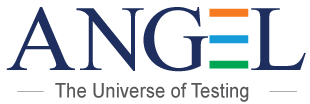Claim Verification:
Testing verifies marketing claims, such as:
“Low Sodium”: Sodium content is tested to ensure it meets the defined threshold (e.g.less than 140 mg per serving in the U.S.). “High in Fiber”: Testing verifies that adequate dietary fiber is present to qualify under regulatory requirements. “Gluten-Free”: Advanced testing detects gluten at parts per million levels below what is considered acceptable (in most countries, 20 parts per million).
Allergen Testing: To make claims such as “dairy-free” or “peanut-free,” food testing detects trace amounts of allergens that might cause reactions in sensitive people. More advanced methods such as enzyme-linked immunosorbent assay (ELISA) ensure these claims are true.
Additive and Preservative Analysis:Testing also ensures additive levels such as artificial colouring, sweeteners, or preservatives are within legislated limits and are actually added as stated on the labelling.
Challenges with food label testing:
a. With this advancement in technology comes significant challenges in foodtesting including:
b. Complex Formulations: Recent modern food products often blend their natural and synthetic elements and make analysis more complex.
c. Global Supply Chains: Ingredients from all areas of the world must undergo consistent testing to ensure identical content and results.
d. Changing Regulation: Changes in labelling legislations call for manufacturers as well as testing laboratories to keep updating themselves.
Innovative Technologies That Boost Label Precision:
a. The direction of food label testing in the future is being led by next-generationtechnologies.
b. Artificial Intelligence (AI): AI-powered algorithms process test data for more rapid and precise results
c. Portable Spectroscopy Equipment: These instruments enable in-line validation of nutritional composition.
d. Block chain for Traceability: Block chain records every step in the supply chain, ensuring transparency and consistency in labelling.




No comment